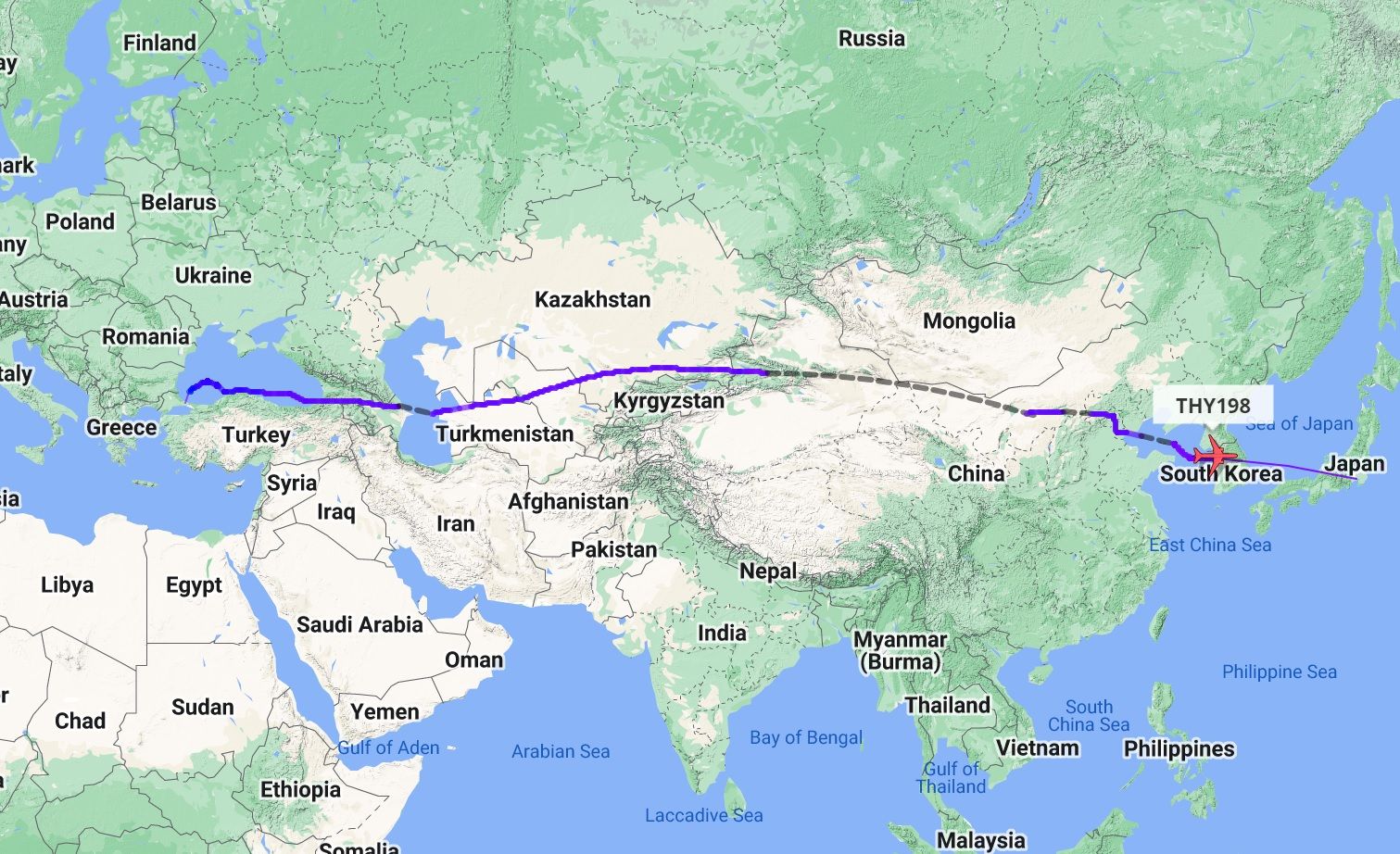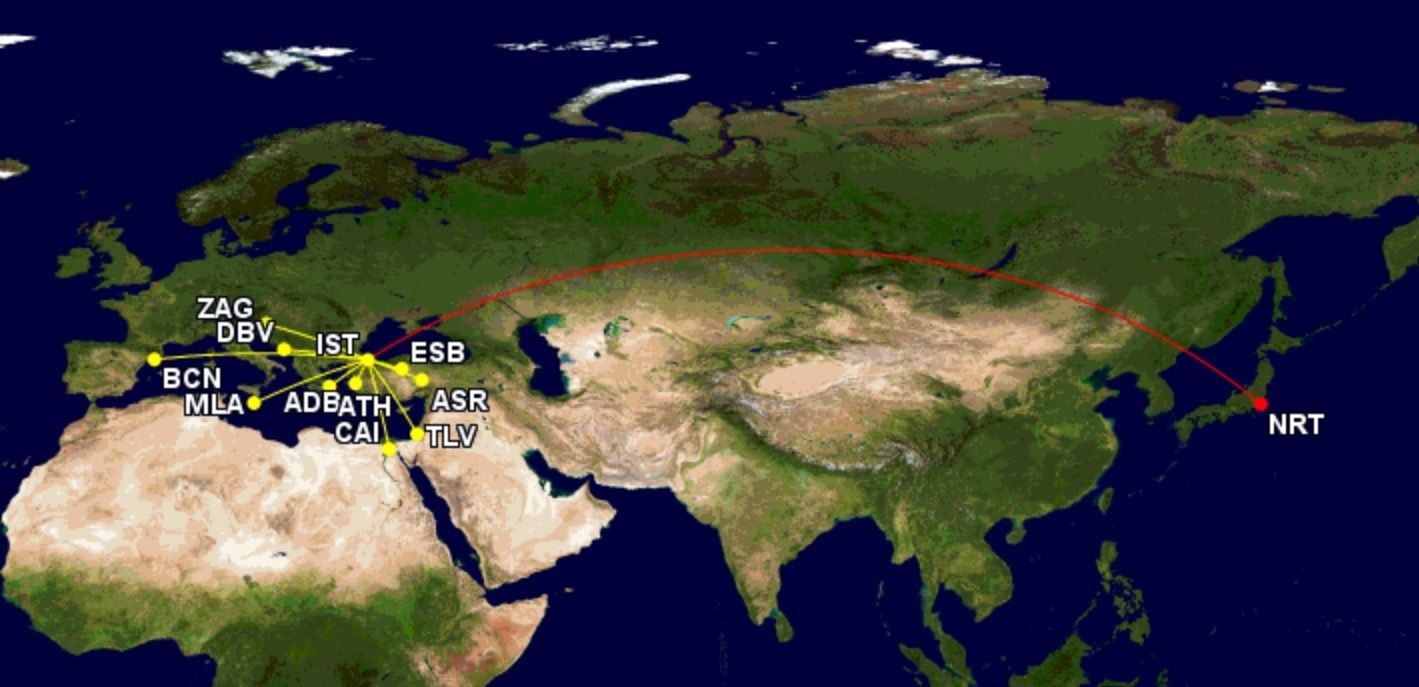Turkish Airlines will return to Tokyo Narita this December, according to Aeroroutes. The Star Alliance member last served the route in – you guessed it – March 2020. It'll supplement its existing 1x daily Tokyo Haneda operation, meaning that Istanbul Airport-Tokyo will rise up to 2x daily, a frequency last seen in early 2016.
Turkish returns to Narita
From December 15th, Turkey's flag carrier will again serve Tokyo Narita, although it isn't bookable when writing. With 3x weekly flights, it'll deploy 300-seat B787-9s. These have 30 fully flat business and 270 economy seats, fewer in total than its A350s and B777s.
It is scheduled as follows, with all times local. For completeness, Haneda's times in December are included too:
- Istanbul to Tokyo Haneda: TK198, 02:50-19:45 (10h 55m block), 1x daily ← existing; B777-300ER
- Istanbul to Tokyo Narita: TK50, 14:55-07:50+1 (10h 55m), 3x weekly; B787-9
- Tokyo Narita to Istanbul: TK51, 09:20-16:55 (13h 35m), 3x weekly; B787-9
- Tokyo Haneda to Istanbul: TK199, 22:50-06:25+1 (13h 35m), 1x daily ← existing; B777-300ER
Stay aware: Sign up for my weekly new routes newsletter.
Loosening restrictions
Turkish Airlines has bemoaned delays to B787 deliveries, which, it has said, has slowed down its long-haul growth. It's thus interesting that it's pushing ahead with the Narita route despite already serving Haneda, suggesting strong opportunity.
It's no coincidence that it comes soon after Japan further loosened COVID restrictions, although it is still a highly complex picture that severely limits demand. However, on September 12th, Bloomberg said that Japan is considering scrapping "most of its COVID-related restrictions" ahead of the autumn travel season, with a decision to be made this week.
Turkish Airlines is betting on it happening, positioning itself to take advantage of the resulting increased demand. Indeed, it'll be the first time the Star member will serve Narita and Haneda concurrently, at least on a passenger basis. It flew to Narita for many years until March 2020, with Haneda taking over in July that year.
Discover more aviation news.
77% of passengers transited Istanbul
In 2019, the most recent year unaffected by the pandemic, Turkish Airlines had 245,000 roundtrip seats for sale (rounded) between Istanbul – now the busiest Star Alliance hub – and Narita (it didn't serve Haneda). According to booking data, it carried approximately 219,000 passengers, with a seat load factor (SLF) of 89%. That year, Turkish Airlines' 2019 annual report shows an 81% system average international SLF.
Analyzing Tokyo booking data results in this breakdown of passenger traffic:
- Transited over Istanbul: 169,000 roundtrip passengers (77%)
- Istanbul-Tokyo point-to-point: 44,000 (20%)
- 'Bridging' passengers (transited both airports): 4,000 (2%)
- Transited Narita: 2,000 (1%)
Where Tokyo passengers go
In 2019, wider Turkey was firmly its leading country market for transit passengers, followed by Greece, Israel, Italy, Spain, Croatia, Egypt, Malta, Germany, and Ukraine.
At airport level, its top 10 markets were as follows, led by the Turkish capital, Ankara. The top 10 had around 78,000 passengers, or just under half of the 169,000 who transited Istanbul Airport.
- Tokyo Narita to/from Ankara via Istanbul
- Narita-Tel Aviv
- Narita-Athens
- Narita-Izmir
- Narita-Cairo
- Narita-Malta
- Narita-Kayseri
- Narita-Barcelona
- Narita-Dubrovnik
- Narita-Zagreb
Source of Narita's return: Aeroroutes.
Have you flown the Turkish to/from Tokyo? If so, share your experiences in the comments.

.jpg)

